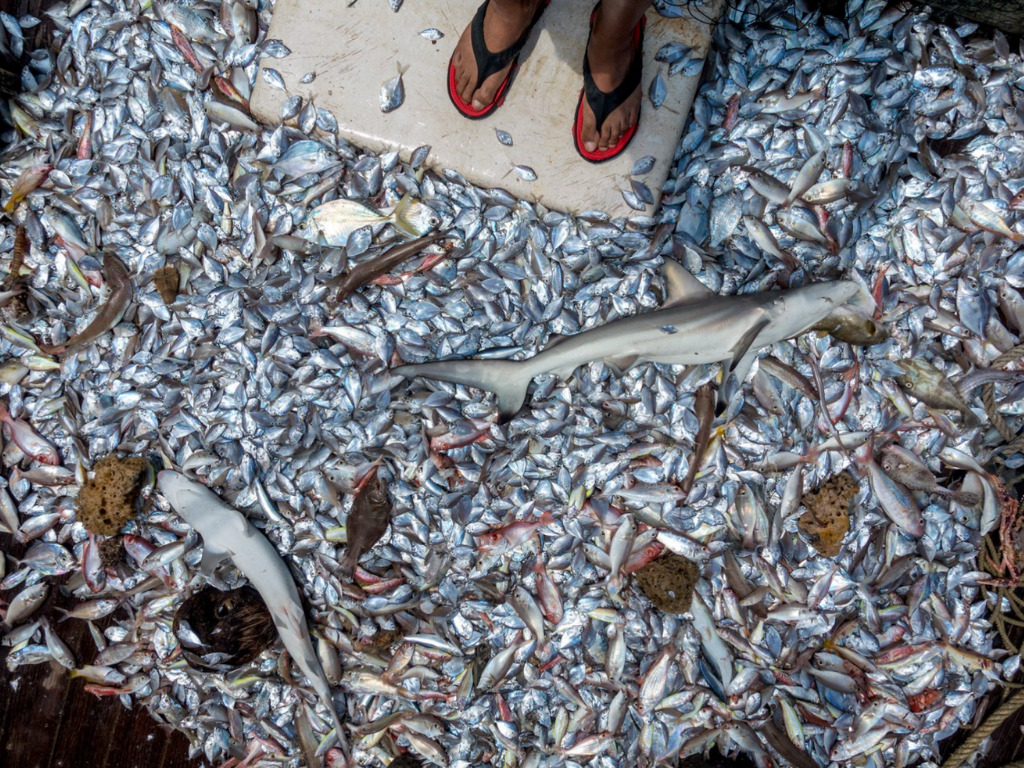Seafood Fraud: 40% Of 9,000 Fish Products From Restaurants To Fishmongers Are Mislabelled, Guardian Analysis Finds
4 Mins Read
A Guardian Seascape analysis of 44 recent studies that consisted of over 9,000 seafood samples from various suppliers in more than 30 countries has revealed that 36% were mislabelled, thus exposing the massive fraud that is occurring on a global scale across the seafood industry.
The findings show that the U.K. and Canada had the highest rates of seafood mislabelling at 55%, followed by the U.S. at 38%.
Using relatively new DNA analysis techniques, the studies highlighted various comparisons in sales of fishes, for instance, in the tested fishes, researchers found around 40% mislabelling in the sale of fish labeled as “snapper” by fishmongers, supermarkets and restaurants in Canada, the U.S., the U.K., Singapore, Australia, and New Zealand.
In several cases, fishes were labeled as different species in the same family, for example in Germany, 48% of tested samples that were supposed to be king scallops, in reality, were less-famous Japanese scallops. In Italy, researchers found a 45% mislabelling rate in 130 shark fillets, suggesting that Italian consumers were being sold cheaper and lesser-known species of shark.
Apart from this, around 70% of ‘snapper’ samples across the U.K. were actually found to be different fishes that are classified as endangered or vulnerable, including precious reef‐dwelling species.
Samples tested in Singapore showed that prawn balls contained pork with a mislabelling rate of 38.5%, whhile in China, 153 samples of roasted fish fillet products from 30 commercial brands drew attention to an alarming misrepresentation rate of at least 58%, with some substitutions from the deadly pufferfish family.
As the fish food chain is the most internationally-traded commodity for human consumption, it is vulnerable to mislabelling and at the same time quite profitable for companies around the world to engage in such practices. Deputy vice-president for US campaigns at Oceana, an international organization focused on oceans, Beth Lowell said: “There are so many opportunities along the seafood supply chain to falsely label low-value fish as high-value species or farmed fish as wild. Study after study has found mislabelling is common everywhere.”
There are so many opportunities along the seafood supply chain to falsely label low-value fish as high-value species or farmed fish as wild. Study after study has found mislabelling is common everywhere.
Beth Lowell, Deputy vice-president for US campaigns at Oceana
However, he also noted that the studies target species known to be problematic, meaning we can’t accurately conclude 36% of all global seafood is mislabelled and with fish, sometimes carelessness too has a huge hand to play as well.
One study highlighted the fraud prevalent in the restaurant sector as seafood samples ordered from 180 restaurants from around 23 countries were analysed to identify the species, and then compared with its names on menus. One out of three restaurants had sold mislabelled seafood with the the highest rates between 40% to 50% in countries like Spain, Iceland, Finland and Germany.
There is considerable economic incentive to sell low-value fish in place of more popular and expensive species – and even more money to be made ‘laundering’ illegally caught fish
Rashid Sumaila, Fisheries Economist
Rashid Sumaila, a fisheries economist at the Institute for the Oceans and Fisheries at the University of British Columbia, said: “There is a considerable economic incentive to sell low-value fish in place of more popular and expensive species – and even more money to be made ‘laundering’ illegally caught fish.”
In a 2020 study, between 8m and 14m tonnes of fish were found to be caught illegally every year. “That’s like 15 to 20 million cows being stolen every year, in terms of weight. Fish laundering is often linked to illegal, unreported, and unregulated (IUU) catches by large “distant” fleets, in which foreign-flagged vessels operate off the coasts of Africa, Asia, and South America. Often, the catches are processed onboard large shipment vessels, where mislabelling and mixing of legal and illegal fish is done in relative secret. The risk of getting caught is low because monitoring and transparency are weak along the seafood supply chain. People can make a lot of money doing this,” Sumaila concluded.
Seaspiracy, a new Netflix documentary is all set to launch in late March and will take a deep dive into the destruction the fishing industry is having on our marine ecosystems, with its role in plastic pollution, and will also discuss the challenges in the concept of ‘sustainable fishing’.
Here is another piece that will give you more insight into the fishing industry and why even blockchain can’t prevent seafood fraud.
Lead image courtesy of Oceana.




